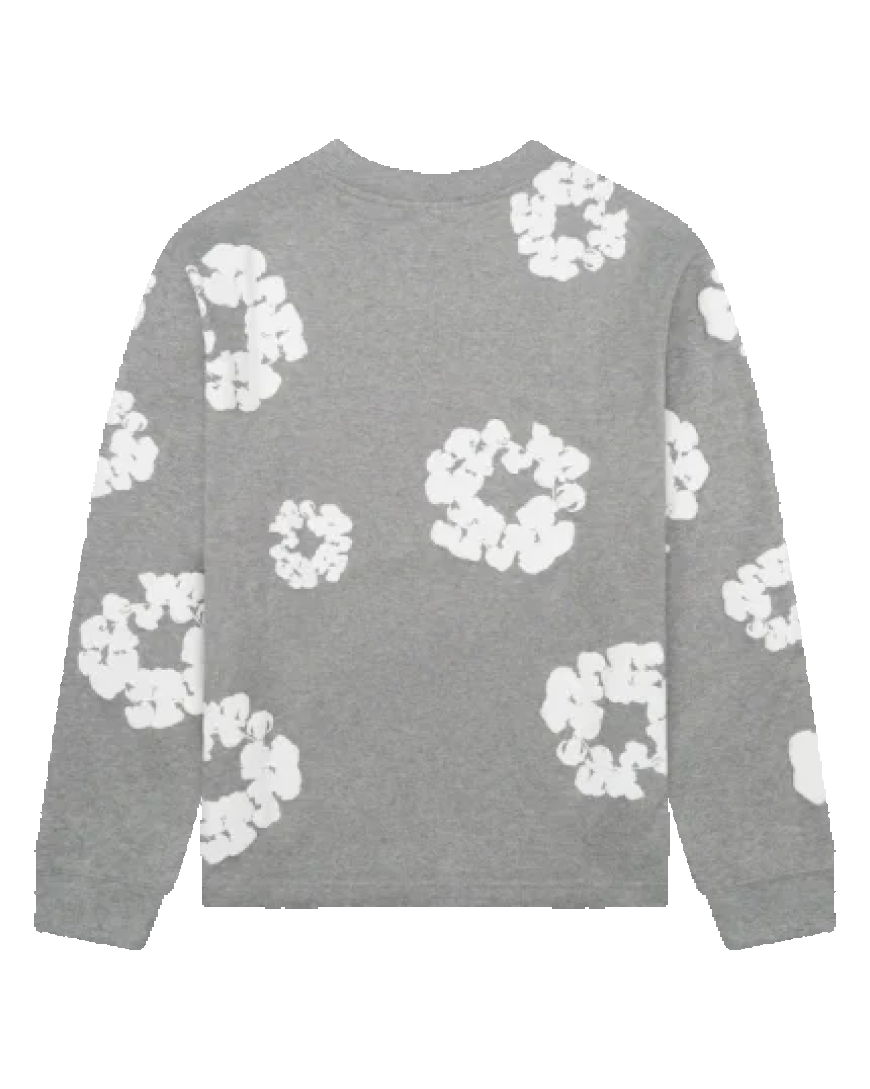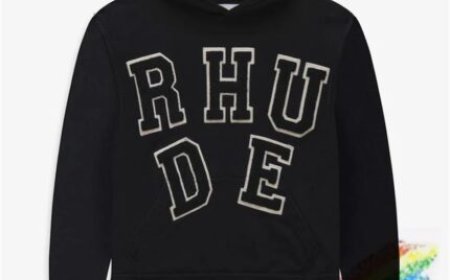Denim Tears: Clothing the Past, Shaping the Future
Denim Tears Canada Collection at Official Denim Tears Clothing Website. Enjoy Fast Shipping and Substantial Discounts! Up to 50% Off.

In an era where fashion often leans toward fast trends and fleeting statements, Denim Tears stands as a powerful reminder of how clothing can serve as both art and activism. Founded by Tremaine Emory in 2019, Denim Tears is more than a fashion labelit is a cultural movement. Emory uses the medium of denim tears denim to tell the story of African American history, labor, and identity, with a particular focus on the legacy of slavery and the Black diaspora in the United States. Through thoughtful design and purposeful storytelling, Denim Tears has emerged as one of the most important voices in fashion today, proving that what we wear can carry deep historical weight and speak volumes about our values.
The Origins of Denim Tears: A Personal and Political Journey
Tremaine Emorys path to founding Denim Tears is rooted in a lifetime of cultural awareness and a desire to merge art, fashion, and activism. Before launching his own brand, Emory worked as a creative director, collaborating with influential brands and artists such as Kanye West, Frank Ocean, Virgil Abloh, and Kanyes YEEZY line. His exposure to the creative elite gave him not only the skills and confidence to build his own label but also the insight to understand how powerful fashion can be when used with purpose.
Emory created Denim Tears as a form of protest and a vehicle for storytelling. The brands first major releasea collection of cotton wreaths emblazoned on Levis jeans and sweatshirtswas a bold and haunting commentary on slavery, particularly the forced labor of Black Americans on cotton plantations. Emory stated that the collection was a "three-year case study" into the origins of cotton in America and its connection to Black suffering and resilience. This debut was not only a fashion statement but also a historical manifesto, challenging viewers and consumers to confront the truth about Americas past.
Cotton as Symbol and Statement
At the heart of Denim Tears lies the symbol of cotton. What is typically seen as a neutral or even nostalgic American textile becomes in Emorys hands a provocative emblem of pain and perseverance. The cotton wreath motifone of the brands signature visualsis a reminder of the agricultural labor that built the United States, especially in the South, through the exploitation of enslaved Africans and their descendants.
Rather than romanticize denim as a symbol of Americana or working-class heritage, Denim Tears reclaims it as a medium of historical memory. Jeans, which have long been associated with American labor and rebellion, are transformed into artifacts of cultural reflection. Emory's use of denim connects the past to the present, urging wearers to consider who made the fabric, under what conditions, and what stories are embedded in its fibers.
Fashion as Resistance and Remembrance
Denim Tears disrupts the traditional fashion narrative by centering Black history in a space that has often appropriated Black culture without acknowledgment. Emorys collections do not shy away from difficult truths. Instead, they embrace them head-on, using design as a form of resistance and remembrance. His garments are not designed to be trendy in the conventional sense; they are designed to provoke thought, evoke emotion, and inspire conversation.
In doing so, Denim Tears operates as both fashion brand and social commentary. Its pieces challenge the commodification of Black culture and demand a more thoughtful engagement with fashion as a cultural product. Emory wants people to understand that what we wear is never just aestheticit is political, historical, and deeply personal.
Collaborations That Carry Meaning
One of the unique strengths of Denim Tears is its collaborative spirit. Emory has worked with major players like Converse, Levis, Ugg, and Stssy, bringing the ethos of Denim Tears to broader audiences while staying true to its mission. These collaborations are never surface-level. For example, his work with Levis, the quintessential American denim brand, adds layers of irony and depth to his commentary on cotton and slavery. Rather than merely leveraging Levis legacy for clout, Emory reimagines it through a lens of truth-telling.
His partnership with Converse resulted in sneakers that continue the story started by his denim pieces. Shoes adorned with cotton imagery and messages about liberation serve as walking reminders of Black resilience and contribution. Each collaboration reinforces the central message of Denim Tears: that fashion can be a canvas for cultural memory and future vision.
Educating Through Aesthetics
Denim Tears is not just about wearing clothesits about understanding what those clothes represent. Emory uses every collection as an opportunity to educate and inform. Through carefully written captions, historical references, and visual storytelling, he provides context for each design. In a time when many consumers are craving meaning in their purchases, Denim Tears offers depth, clarity, and purpose.
Emory has said that his work is aimed at creating "cultural artifacts," not just fashion pieces. In this sense, his collections function like exhibitions or essays, inviting audiences to engage, reflect, and learn. The educational aspect is integral, making Denim Tears an example of how fashion can be a bridge between past injustices and future possibilities.
Shaping the Future: A Vision Beyond Fashion
As Denim Tears continues to grow, its impact reaches far beyond clothing. The brand is helping to reshape the way we think about fashions role in society. In an industry often accused of superficiality, exploitation, and cultural theft, Denim Tears offers a blueprint for accountability and creativity.
Emorys vision for the future is rooted in honesty, empowerment, and transformation. He believes that by understanding the pastparticularly the struggles and triumphs of Black Denim Tears Hoodie peoplewe can create a more just and expressive future. This philosophy extends beyond fashion into art, music, literature, and education. Denim Tears thus becomes a cultural institution, not just a clothing line.
Conclusion: Wearing the Story, Carrying the Legacy
Denim Tears is a testament to the idea that fashion can be a vehicle for truth and a platform for change. In the hands of Tremaine Emory, denim becomes more than fabricit becomes a story, a protest, a remembrance, and a promise. It honors those who were forced to pick cotton by choicefully weaving their legacy into every thread, turning pain into power and oppression into art.
As the world grapples with its histories and searches for more meaningful ways to engage with identity, culture, and expression, Denim Tears stands as a guiding light. It invites us to wear not just for style, but for story. It reminds us that the past is never too far behind, and the future is always waiting to be shapedone stitch at a time.























